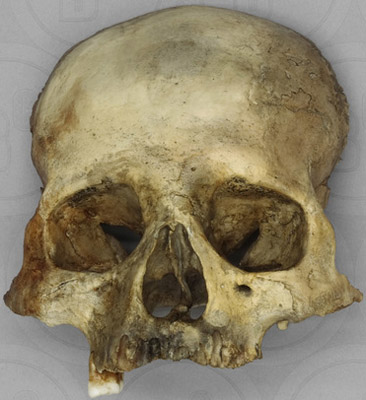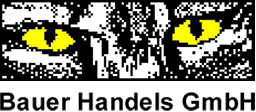Mensch: Schädel
weiblicher Schädel mit Cribra Orbitalia
Homo sapiens
Teilabguss eines weiblichen Schädels mit Cribra Orbitalia
Der Schädelabguss aus der Hrdlicka Paläopathologie Sammlung zeigt die Auswirkungen von cribra orbitalia, einem allgemeinen Ernährungsstressindikator . Man vermutet, dass cribra orbitalia durch Eisenmangel -Anämie, Mangelernährung, Infektion und/oder mangelhafte Hygiene verursacht wurde.
.Amtlich genehmigt vom San Diego Museum of Man für Bone Clones. Ein Teil des Verkaufserlöses geht in die Förderung von deren Arbeit.
7.9 x 13.4 x 15.9 cm
Beschrieb in Englisch:
This bone pathology skull from the Hrdlicka Paleopathology Collection exhibits the effects of cribra orbitalia, a general nutritional stress indicator. It is said to be caused by iron deficiency anemia, diets lacking in essential nutrients, infectious disease, and/or poor sanitation. This pathology is very similar to porotic hyperostosis, but it is manifested differently in the skeleton. Porotic hyperostosis occurs as porous areas on the skull vault, while cribra orbitalia refers to porous areas on the roofs of the orbits (bilateral). Licensed to Bone Clones® by the San Diego Museum of Man. A portion of the sales goes to further their work.
.Amtlich genehmigt vom San Diego Museum of Man für Bone Clones. Ein Teil des Verkaufserlöses geht in die Förderung von deren Arbeit.
7.9 x 13.4 x 15.9 cm
Beschrieb in Englisch:
This bone pathology skull from the Hrdlicka Paleopathology Collection exhibits the effects of cribra orbitalia, a general nutritional stress indicator. It is said to be caused by iron deficiency anemia, diets lacking in essential nutrients, infectious disease, and/or poor sanitation. This pathology is very similar to porotic hyperostosis, but it is manifested differently in the skeleton. Porotic hyperostosis occurs as porous areas on the skull vault, while cribra orbitalia refers to porous areas on the roofs of the orbits (bilateral). Licensed to Bone Clones® by the San Diego Museum of Man. A portion of the sales goes to further their work.




Hersteller:
| Bone Clones |  |
Alle Preise zuzüglich MwSt und Versandkosten

